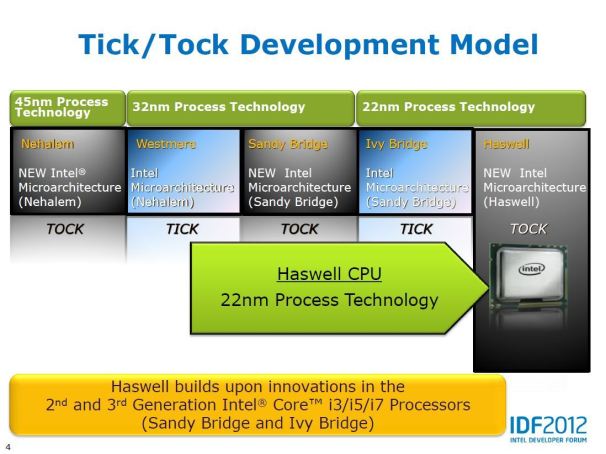
modeling 1 Introduction and Related Work In accord with Intel's tick-tock model. On the surfacve, this means a 50% increase in the longevity of a given process node over the old tick-tock cycle with no firm timescales attached to each part of the new cycle, however, it gives Intel breathing room to spend four or more years on a given node without having to confess to a roadmap miss. 29th International Conference, Nuremberg, Germany, April 4-7, 2016. Under the new development cycle, Intel would launch products on a new process node in year one, develop a new microarchitecture on the same process node in year two, then optimise that microarchitecture in year three before moving to the next process node in the chain. What it will do, however, is mean the company's products stay on the same process node for longer: instead of a new node every two years, the target is now a new node every three or more. In the filing, first spotted by financial site The Motley Fool, Intel explained that the shift will not affect its releasing of new products each year. The company's most recent process node shrinkages have encountered delays as the difficulties of sub-10nm physics raise their ugly heads, and while Intel has been quick to downplay the issues as simple bumps in the roadmap its latest 10-K financial report tells a different story: it's abandoning tick-tock in favour of a longer three-phase cycle dubbed process-architecture-optimisation.

In recent years, however, Intel has found the laws of physics getting in the way of its roadmap. During the tick portion of the cycle, the company takes its existing processor microarchitecture and migrates it to a smaller process node in order to go on doubling the number of now-smaller transistors in tock, the company works on improving the processor's microarchitecture while retaining the same process node. Since the semiconductor industry adopted Moore's Law, the observation by the eponymous Intel co-founder that the number of transistors on a latest-generation semiconductor tends to double every 18 months, Intel has stuck to a rigid annual development cycle known as tick-tock.

Seeing as the process of creating smaller and smaller transistors is getting harder to master, this sort of longer lifecycles and delays may soon become the norm.Intel's recent troubles with its tick-tock semiconductor development cycle are not the temporary hiccough the company had downplayed them to be, with its latest financial filing admitting that it is moving to a new development strategy. Recently, IBM said it had managed to create 7nm transistors in a world-first, but it isn’t clear yet whether the company’s manufacturing process can truly be scaled up. Meanwhile, CannonLake, the first 10nm chips are being pushed back to 2017.

Tick was a new manufacturing process where the. Hence, the company is delaying the jump to 10nm and instead, is adding a third generation of 14nm chips, codenamed Kaby Lake. Tick tock with regards to Intel CPUs refers to the companys release cycle strategy prior to early 2016. Going forward, the company expects similar problems with a 10nm architecture. Intel has had significant problems with its 22nm manufacturing process as well as the current 14nm models.

As we’re getting down to smaller and smaller scales and pushing on the limits of physical laws, the manufacturing process is getting increasingly more complex, and even the tiniest mistake can ruin everything.
#Intel tick tock 2016 Pc
Unfortunately that’s all coming to an end now, thanks to the problems experienced by Intel over the last couple of generations of chips. Intel’s tick-tock model may be dead, but the PC industry still demands new hardware every year.Many PC models are refreshed once a year or so, and that means that the PC makers need new stuff to.


 0 kommentar(er)
0 kommentar(er)
